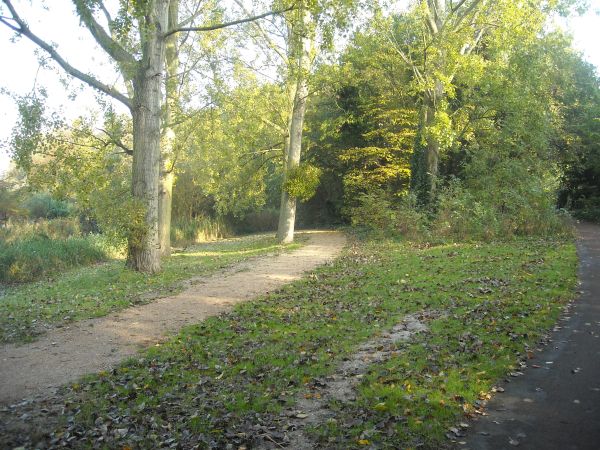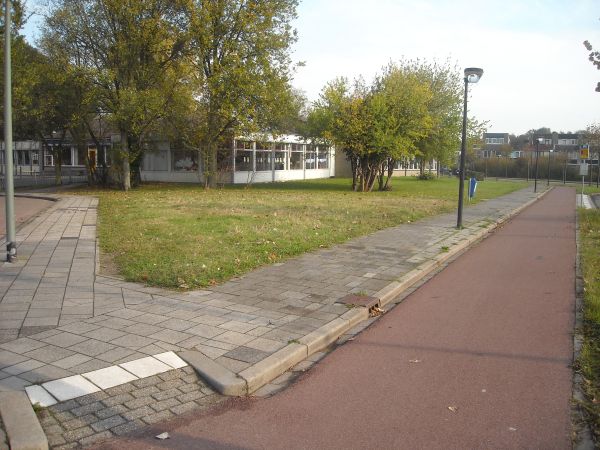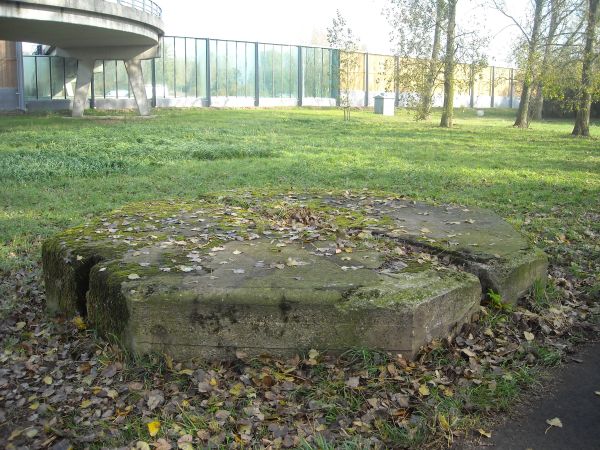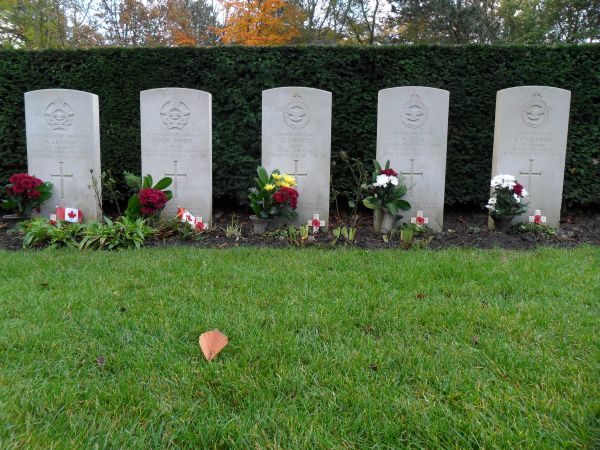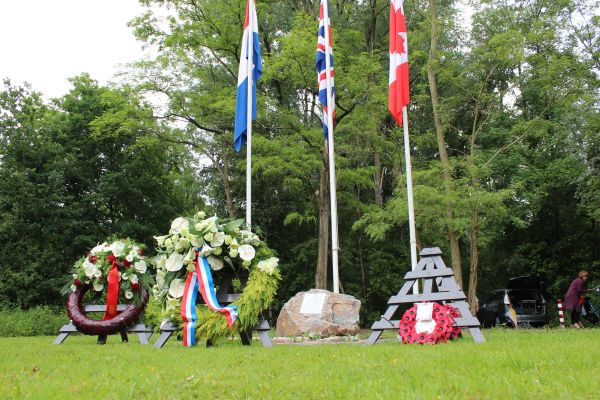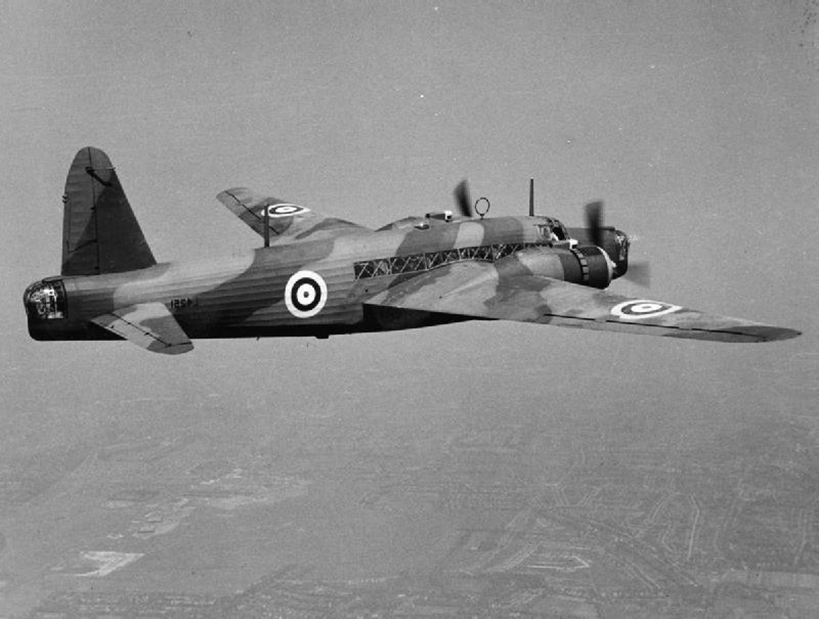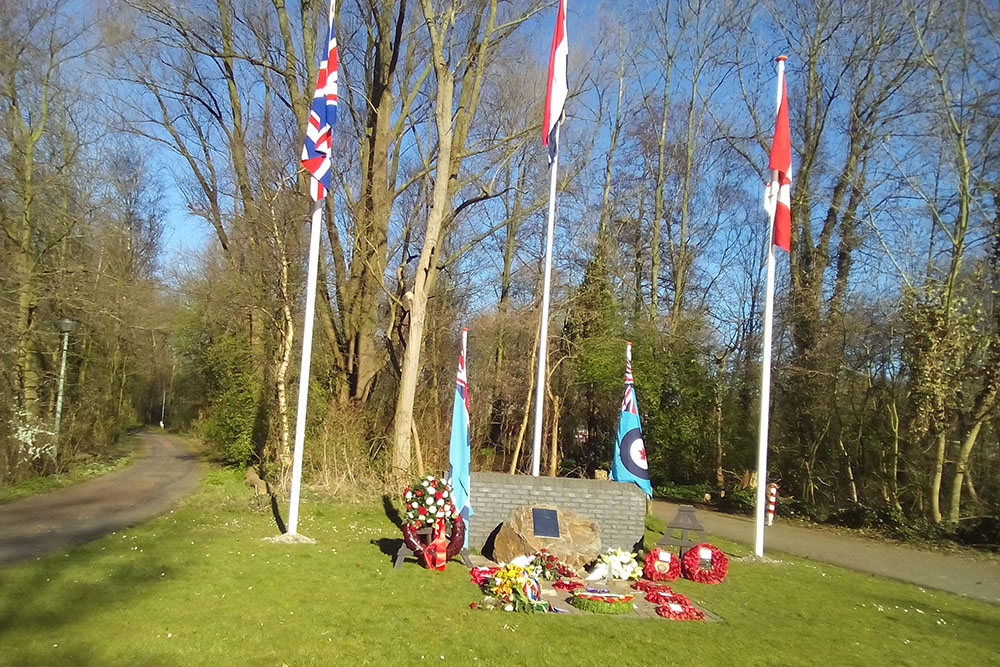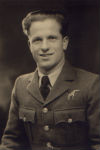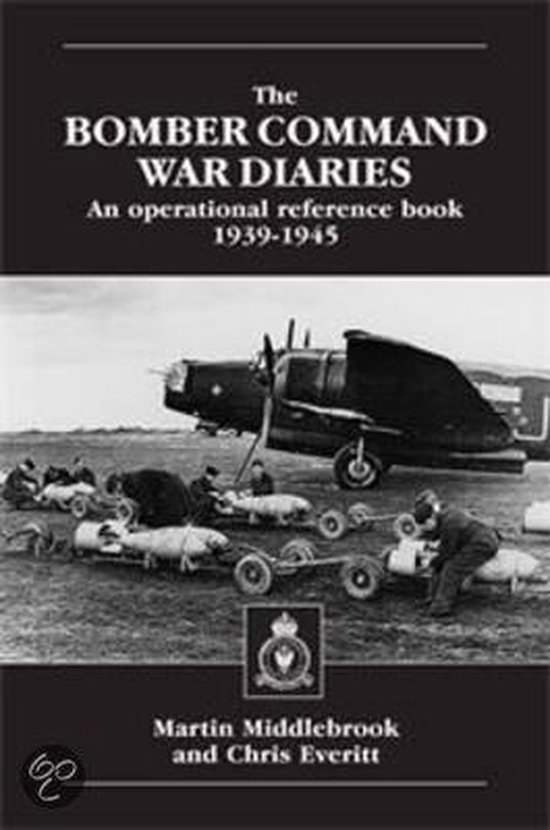The crash of the Wellington Z1321 near Vlaardingen
Introduction
At exactly midnight on 25 to 26 March 1942, engine humming is heard for the umpteenth time by the crew of the observation post of the Luchtbeschermingsdienst (air protection service) Vlaardingen. The searchlights are switched on in south-eastern, southern and north-east direction. Shooting starts. More searchlights are switched on. A British bomber gets caught in the beams of light. The pilot of the machine tries to flee into the darkness, but his attempted escape fails. Above the city the plane gets hit. Seven minutes after midnight, the plane crashes in the direction of the city of Delft.
Target Essen
The allied Air Force tried to inflict damage to the German war machine by means of strategic bombardments on industrial and military targets. Each night allied bombers took off to attack factories, warehouses, port installations and other targets. For the night of 25 to 26 March 1942, R.A.F. Bomber Command had chosen the steel and arms manufactures of Krupp near the town of Essen as the target. Krupp supported Nazi Germany by producing weapons, violating the Treaty of Versailles. To destroy the factories the largest fleet of bombers until then was used. Planes of 142 "City of Worcester" Squadron were part of the stream of 254 bombers. The squadron was based at R.A.F. station Waltham in Grimsby, Lincolnshire. One of the planes of the squadron was Wellington Z1321. On 25 March 1942 the crew of this machine was as follows:
Pilot: Sergeant David White (20 years old, British)
Co-pilot: Flight Sergeant William Pipher (24 years old, Canadian)
Air Observer/Navigator: Flight Sergeant Andrew Lennox (23 years old, Canadian)
Wireless Operator/Air Gunner: Sergeant Alfred Jelly (29 years old, British)
Air Gunner: Sergeant Eric Groves (22 years old, British)
Air Gunner: Sergeant Ronald Barrie (21 years old, British)
With exception of White and Groves, the crew had been trained at 23 Operational Training Unit and joined 142 Squadron on 25 October 1941. Around that time many new crews arrived at the squadron, since the unit was re-equipped with the Wellington Mk IV in the autumn of 1941. White and Groves were trained at 25 Operational Training Unit. They replaced the original crew members Stuart Innes and Robert Roy Henderson.
Wellington Z1321 was part of the first attacking wave. The plane took off from her home base just before 8:30 PM British time. The target area was reached without problems. The bombs were dropped on target and Z1321 started the return flight to Grimsby. There were great concentrations of Flak (Flugzeug Luftabwehr Kanone) around the city of Essen. Z1321 was hit. Probably as a consequence of the damage, the plane had insufficient engine power. It lost height and had to leave the bomber stream.
Air defence Vlaardingen
The air-defence in Rotterdam and the surrounding area was dealth with by 261. and 57. Flakabteillung. These units also included a heavy anti-aircraft battery in the west of Vlaardingen, next to the current highway Maassluis – Hook of Holland. The battery contained four 88mm guns, two quick firing 20mm guns and close lain searchlight installations. The log of the observation post of the Vlaardingse Luchtbeschermingsdienst reported planes which were flying from the United Kingdom on their way to Germany for the first time at 21:48. Fire was opened on these aircraft a couple of times, but without result. Two hours later the first hostile planes which flew in reversed direction were reported above Vlaardingen.
Crash
Shortly after midnight, at 00:01 AM, engine humming from a low flying aircraft was heard at the observation post of the Luchtbeschermingsdienst Vlaardingen. It was the solitary Z1321. The Wellington, which had lost altitude and speed, was traced without much effort by the searchlights. Fire was opened on the machine and at 00:04 two explosions were heard. Two minutes later a new, heavy explosion followed. From 00:07 AM fire was observed by the observation post of the Luchtbeschermingsdienst in the direction of the city of Delft. This was thought to be the shot down aircraft, but uncertainty existed because of low hanging fog. The police force of Vlaardingen got the task to start a search as it was suspected that the crash site was within the boundaries of the municipality of Vlaardingen.
At 01:40 AM warrant officer Van de Berg and the policemen Terhoeve and Hermans of the Vlaardingen police force reported that a hostile plane had crashed down in a pasture next to the Holyweg (nowadays the edge of the park Holy-Noord is located on this spot). Approximately 200 meters from the wreckage, the body of one member of the crew (Sergeant Barrie) had been found. Wreckage laid spread around the shell of the aircraft. It was suspected that three more crew members would have died in the crash, "what could be traced back from the arms and legs which were visible in the burning wreckage and the surrounding area".
Salvage and aftermath
The German Wehrmacht was charged with the guarding of the wreck. Later they had to be helped by the police force, due to the large amount of curious people. At the end of the afternoon of 26 March, three bodies (Sergeant Barrie, Sergeant Jelly and Flight Sergeant Phiper) were recovered. On Friday, March 27th, a fourth body (Sergeant White) was found. Based on the aircraft type, rescue workers kept searching for a fifth body. This was later recovered, as was a sixth body, when the nose of the plane was drawn out of the ground. These were the bodies of Flight Sergeant Lennox and Sergeant Groves. The bodies were moved to Loosduinen (Den Haag). White, Phiper, Lennox, Jelly and Barrie were buried next to each other at the British plot at the Westduin General Cemetery in Den Haag. It is unclear what happened to the body of Sergeant Groves. R.A.F. documents mention that he was buried in Wichmond, a little town in the province of Gelderland, but his grave isn’t there anymore. As he has no known grave, he is mentioned on the Runnymede Memorial in Englefield Green, Egham.
The wreckage of Wellington Z1321 was cleared and was transported to the scrap heap `Draka' in Utrecht. From there, the scrap was transported to Germany, where it was re-melted for the benefit of the German war industry. One plane component was used as a fence on the estate of a farm to the Holyweg up to the sixties. It consisted of a wing flap which later was found in a surrounding pasture. But in the sixties, the farms on the Holyweg had to make place for the present residential Holy and so the last remnant of Z1321 disappeared. For many years, there was no visual memory to the crash. In 2012, a memorial was erected for the crew of this Wellington. It is located near the crash site.
Extra information
If the reader of this article has further information on this bomber or it's crew, then you are pleasantly requested to get in touch with the author.
Definitielijst
- Bomber Command
- RAF unit which controlled strategic and sometimes tactical bombing (as in Normandy)
- Flak
- Flieger-/Flugabwehrkanone. German anti-aircraft guns.
- Krupp
- German family of steel and weapon’s manufacturers.
- Nazi
- Abbreviation of a national socialist.
- Squadron
- A military unit in the Belgian navy usually six to eight small ships operating together under one command. The smallest military unit in the Dutch air force of about 350 men. In most countries is the designation of a military unit thesize of a company. It is either an independent unit, such as a battery, or part of a bigger Calvary unit. In the air force it is the designation of a unit of aircrafts.
- Wehrmacht
- German armed military forces, divided in ground forces, air force and navy.
Images
Wellingtons of No.142 Squadron involved in the operation
An overview of the other Wellingtons of No.142 Squadron which were detailed for the operation to Essen on the night of 25/26 March 1942.
Wellington Z1206 (QT-F)
Pilot: Pilot Officer John Nigel Tillard (19 years old, British)
2nd pilot: Sergeant Harold Selby (26 years old, British)
Observer: Sergeant Maurice Victor Ward (30 years old, British)
Air Bomber: Flight Sergeant Barry Martin Smythe Henderson (22 years old, British)
Wireless Operator/Air Gunner: Sergeant Brian Henry Forster (21 years old, British)
Air Gunner: Sergeant Herbert Leslie Price (26 years old, British)
Wellington Z1283 (QT-N)
Pilot: Sergeant George Thomas Leather (20 years old, British)
2nd pilot: Sergeant Wilfred Clarence Picher (24 yeard old, Canadian)
Observer: Sergeant Gerald Patrick Murray (21 years old, British)
Air Bomber: Sergeant Hugh James McHutchison (20 years old, British)
Wireless Operator/Air Gunner: Sergeant Horace James Whale (British)
Air Gunner: Sergeant Kenneth William Smith (20 years old, British)
Wellington Z1289 (QT-R)
Pilot: Flight Lieutenant Eric Frank Knowles Campling (21 years old, British)
Observer: Pilot Officer Joseph Arthur Goring (29 years old, Canadian)
Air Bomber: Sergeant James Stewart Spence (age unknown, British)
Wireless Operator/Air Gunner: Sergeant A. E. Elphick (age unknown, British)
Air Gunner: Flight Sergeant Francis Henry Lang (25 years old, Canadian)
Wellington Z1287 (QT-Q)
Pilot: Pilot Officer Ronald Waters (age unknown, British)
2nd pilot: Sergeant Leonard Hewitt (age unknown, British)
Observer: Pilot Officer Howard Walter Dale (age unknown, Canadian)
Air Bomber: Sergeant Russel Harry Winter (age unknown, British)
Wireless Operator/Air Gunner: Sergeant Andrew Bryson Hamilton (age unknown, British)
Air Gunner: Sergeant John Frederick Russell Tate (age unknown, British)
Wellington Z1376 (QT-M)
Pilot: Pilot Officer John Hubert Hall (27 years old, Canadian)
2nd pilot: Sergeant Lawrence Hugh Houghton (21 years old, British)
Observer: Flight Sergeant John Edward Harritt (29 years old, Canadian)
Air Bomber: Sergeant Arthur Richard Tidder (25 years old, British)
Wireless Operator/Air Gunner: Sergeant Geoffrey Peter Wadsworth (21 years old, British)
Air Gunner: Sergeant Ernest Joseph Pettitt (20 years old, British)
The fate of the above crew can be read in the article about Wellington Z1203.
Wellington Z1221 (QT-Y)
Pilot: Pilot Officer Stanley Bryan Chritchison (21 years old, British)
2nd pilot: Pilot Officer Haydn William Goule (age unknown, British)
Observer: Flight Sergeant Joseph Edward Hector Emond (27 years old, Canadian)
Air Bomber: Sergeant William Ernest Hudson (age unknown, British)
Wireless Operator/Air Gunner: Sergeant Herbert Sidney Stock (36 years old, British)
Air Gunner: Sergeant John Charles Skelton (28 years old, British)
Wellington Z1209 (QT-Z)
Pilot: Flight Sergeant William Fleming Caldow (21 years old, British)
Observer: Flight Sergeant Percy Henderson Stewart (29 years old, New Zealand)
Air Bomber: Sergeant James Octon Straffen (22 years old, British)
Wireless Operator/Air Gunner: Sergeant Stanley James Oertel (20 years old, British)
Air Gunner: Sergeant Joseph Eugene Roger Pichette (age unknown, Canadian)
Wellington Z1236 (QT-U)
Pilot: Flight Sergeant Norman John Warfield (20 years old, British)
2nd pilot: Sergeant Herbert John Green (age unknown, British)
Observer: Pilot Officer Eric John Robert Yates (21 years old. New Zealand)
Air Bomber: Sergeant William Lusk Harper (age unknown, British)
Wireless Operator/Air Gunner: Sergeant Walter Gilroy (age unknown, British)
Air Gunner: Sergeant John Howarth (age unknown, British)
Wellington Z1261 (QT-X)
Pilot: Pilot Officer Joseph Porter McCarthy (28 years old, Canadian)
2nd pilot: Sergeant Donald Coburn West (20 years old, Canadian)
Observer: Flying Officer D.M. McCormick (age unknown, Canadian)
Air Bomber: Sergeant Martin Gasson Healy (29 years old, British)
Wireless Operator/Air Gunner: Sergeant Kenneth Fishwick (age unknown, British)
Air Gunner: Sergeant Howard Matthew James (age unknown, British)
Definitielijst
- Squadron
- A military unit in the Belgian navy usually six to eight small ships operating together under one command. The smallest military unit in the Dutch air force of about 350 men. In most countries is the designation of a military unit thesize of a company. It is either an independent unit, such as a battery, or part of a bigger Calvary unit. In the air force it is the designation of a unit of aircrafts.
Information
- Article by:
- Pieter Schlebaum
- Published on:
- 07-09-2010
- Last edit on:
- 17-05-2024
- Feedback?
- Send it!
Related themes
Related sights
Related persons
Related books
Sources
- MIDDLEBROOK, M. & EVERITT, C., The Bomber Command War Diaries, Midland Publishing, 2011.
- SCHLEBAUM, P., Neergestort in de Holierhoekse Polder, Streekmuseum Jan Anderson, Vlaardingen, 2012.
- Archive Luchtbeschermingsdienst Vlaardingen
- Archive Police Vlaardingen
- Archive Royal Air Force Museum
- 142 Squadron Operations Record Book
